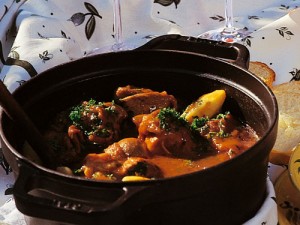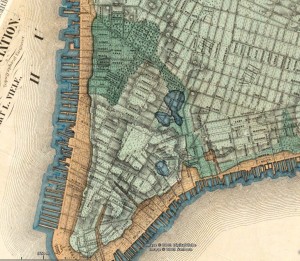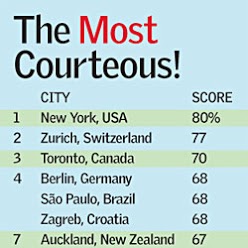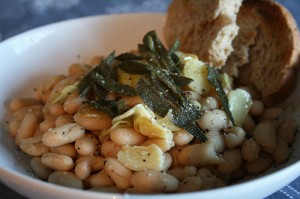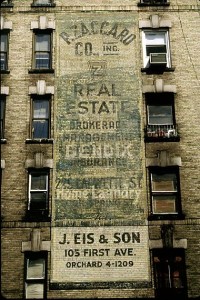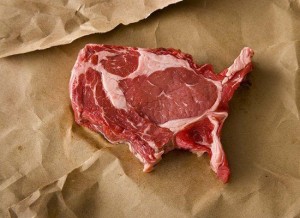Mark Bittman, the seemingly omnipresent food writer, did a recent op-ed piece in The New York Times bewailing the state of restaurants in France and their reliance on food “cooked at a faraway factory.” He is quite harsh in his opinions concerning Paris restaurants (he has to research and eat at three in order to find one good one). Bittman exaggerates (slightly). Sure, there are bad restaurants in France (as in every country) where owners pay more attention to profit than dining pleasure. And, sure, Paris is no longer the dining capital of the world. New York has taken over that spot. In addition to world class dining experiences like Per Se, Bernardin, etc., mighty Noo Yawk has an almost limitless array of interesting ethnic restaurants ranging from the entire spectrum of Korean and Chinese restaurants in Flushing to Ghana taxi driver food on the Grand Concourse in The Bronx to Uzbekistan eateries in Rego Park. And, if you want to recapture the golden age of French cuisine replete with lush flowers, deft service and classic dishes, one can turn back the clock and empty one’s wallet at La Grenouille on Manhattan’s posh upper East side. And, then there’s Brooklyn with its astounding metamorphosis into the world’s center of hipness with a multitude of food experiences to match its style. But, Paris, though no longer the ultimate gourmand destination, still has much to offer. Super baguettes and Poilane bread. Very good oysters (and guys who know how to shuck them). The best cheese and butter (Bordier). Wine shops stocked with splendid affordable vintages. Cafes, for the most part, offer mediocre food but world class viewing of stylish women (of all ages, thankfully). Bittman has a point. It’s not easy to find restaurants where fresh food is prepared on the premises. HG’s advice: Consult Alec Lobrano’s Hungry for Paris guide and John Talbott’s website. In Paris, HG spends much time at museums and cinemas. When it comes to food, HG is downscale. Favorite hangout is the back room of La Cave des Abbesses, a Montmartre neighborhood wine shop. In this very bare bones place, HG likes to linger over a platter of cheese with a carafe of red wine. In season, there are oysters for one Euro a piece. HG manages to get down a dozen with ease. La Cave is a nice place to visit after listening to the street musicians (usually quite talented) on the Place des Abbesses. HG also likes the gritty Arab/African neighborhood of Montmartre for couscous and other Maghreb specialties. Jour et Nuit is a good place for a hearty meal with the locals. Big flavors. Tiny prices.
Bittman Attacks French Food
July 26th, 2014 § 0 comments § permalink
Secret of A Good Paris Steak: Imported Meat
March 25th, 2014 § 0 comments § permalink
When HG wanted to get some vigorous jaw exercise in Paris, HG ordered a bavette (flank steak) or an onglet (hangar or butcher steak). Tough? These were broiled baseball mitts. Well, it seems times are changing and the outlook is rosy (or bleu or saignant) for the Paris steak eater. The French, supremely nationalistic about their cuisine, are finally making an admission: French beef can be admirable when long cooked as pot au feu or boeuf bourgignon. But, served as steak French beef is usually tough and tasteless when compared to imports from Germany, Scotland, Argentina and the United States. That’s why more than 20% of meat presently served in French restaurants is imported. And, that number is rising. Good Paris steakhouses like Le Severo and Au Boeuf Couronne now depend on imports. You can get a nice steak at those places (Severo’s frites are exemplary and Boeuf Couronne serves hard-to-find pommes souflee). But, if you want really great steak nothing beats a traditional New York eatery like Spark’s and Keen’s Chop House (yes, Peter Luger’s is good but a tad overrated). HG believes New York’s restaurateurs reserve the best cuts in the world for themselves.
New York Nostalgia (The French)
January 21st, 2014 § 2 comments § permalink
HG learned to love French food more than six decades ago. At that time, New York had many modest French bistros in the theater district; but, the really rough-and-ready, down-home French cuisine was found in the bistros west of Ninth Avenue. These were the joints that catered to French sailors from the Ile de France and other cruise ships that docked on the Hudson River. A meal cost about $1.50 (with wine). Lots of offal. It was in these bistros that HG learned to love tete de veau, kidneys, liver, gizzards, brains, etc. There were also some delicious, long simmered winy stews. Beef cheeks (never on an American menu) were a fave of HG’s female companions — fastidious damsels who didn’t fancy the organs ordered by HG. The French dining was often preceded by a good foreign film at The Stanley on gritty W. 42nd Street. A ticket was 35 cents. Apres dinner was garlic scented lovemaking in the best case scenario (or chaste companionship in the worst) in a $30 a month one room apartment on the West Side or Greenwich Village. Ah, ardent youth in a long ago, long gone, cheap New York.
Street Food Renaissance
March 3rd, 2013 § 0 comments § permalink
HG has always enjoyed street food starting with the sweet potatoes, chickpeas, ices and chunks of coconut that were sold along the Bronx streets in HG’s youth. During early manhood HG fancied the grilled Italian sausages with onions and peppers sold from the back of trucks in Greenwich Village. The classic New York City Sabrett hot dog, topped with onions and mustard and sold from a “hot water” cart, was always a treat. In Chinatown, anything sold on the street (no matter how unhygienic it looked) was always good. HG had excellent wurst and rye bread on the streets of Prague and even better wurst at the foot of ski slopes in the Italian mountain town of Selva Val Gardena. HG bought a very savory spleen (yes, spleen) sandwich from a Palermo vendor. HG was not a tripe fan (HG is now a Menudo — Mexican tripe stew — addict) when HG unhappily nibbled a tripe sandwich from the famous truck in the Florence wicker market. In Brazil, HG was too timid to taste the pungent stews being sold by women tending steaming caldrons outside of public markets in Rio de Janeiro and Bahia. The largest array of street food HG ever saw was in the colorful, surreal, slightly insane Djeema el Fnaa, the famous public square in the Moroccan city of Marrakesh. Established sometime around 1147, the square is a virtual maelstrom of noise, aromas and people (native Moroccans and tourists)/ There are magicians, snake charmers, water sellers, acrobats, story tellers, young men with chained Barbary apes, dancing boys and dentists (with large displays of pulled teeth as proof of their skill and prowess). When darkness falls, scores of food stalls appear and the air is filled with smoke. Hundreds sit on benches eating, grilled lamb (and its innards), chicken and every variety of seafood. Somehow HG found the square exciting but sinister (beneath the square is a police center for the vigorous interrogation of suspicious individuals). HG never patronized any of the stalls. Today, street food is having a renaissance moment in the United States. Serious and creative chefs are opening food carts and trucks alongside the ethnic specialty trucks (which had long dominated the market) in cities throughout America. Both groups of chefs are equally drawn to the food cart’s low overhead and the ripe possibility of building an audience for your cooking before dumping a fortune into a brick and mortar restaurant. And not only are the food trucks opening, urban planners and city governments are recognizing their civic importance. Cities such as Portland are actively supporting food trucks and creating a supportive business environment to help them thrive. The trend has reached New Mexico where excellent street food can be relished all over Santa Fe. This is an attractive trend bringing interesting, affordable food to folks who haven’t the time or patience for the traditional, leisurely, sit down restaurant meal. Finally, a culinary trend HG can stand by.
Downtown Observations
January 14th, 2013 § 0 comments § permalink
HG spent a week this last December wandering around the Lower East Side, Little Italy, Chinatown and parts of Soho. The LES is becoming more than cool. It’s frigid. Good little art galleries showing challenging work. Excellent restaurants and bars. It’s a venue for the hip and the beautiful. The old parts of Chinatown (the borders of Chinatown have expanded so massively into the LES and Little Italy that HG needs to define which parts of Chinatown HG is talking about) look a bit sad. Swathes of Mott Street have been taken over by stalls selling the worst kind of crap to tourists. Yes, it’s still a food obsessed community awash with fresh fish and vegetables (absurdly low prices). And, street life is lively. But, the neighborhood seems to lack some of the elan and zest of yesteryear (It may that HG is looking at it with the nostalgia clouded gaze of an old guy). Little Italy has been shrunken, vulgarized and totally touristified. Pity. Reports about old ethnic restaurants like Vincent’s, Umberto’s and Grotto Azzura are not promising. HG has been a great fan of the fiery scungili, shrimp and clam dishes that were once available in Little Italy. Now, if you desire food a la Diavalo, you’ve got to travel to Sheepshead Bay or Howard Beach. Foodies claim that Chinatown cuisine has gone downhill and if you want superior Chinese cooking the Flushing neighborhood of Queens is the place. Yes, there’s great food in Flushing. But, HG ate some superior Chinatown food while visiting at Peking Duck House, Dim Sum Go Go and Full House Cafe. It is still the New York neighborhood where the impecunious can dine for very few bucks. One of the hot items in Chinatown is peeled noodles. Basically, hand pulled noodles but cut into wide strips with a knife. HG had a big plate of these noodles with a super spicy lamb sauce at Xi’an Famous Foods (on Bayard west of Bowery). Fabulous. Cost six bucks. HG had a very good dish of peeled noodles with baby bok choy at Sheng Wang (on Eldridge). Cost five bucks. One night, HG and BSK were feeling peckish before settling down to watch some silly stuff on TV. HG walked down the block to J.J. Noodles (Catherine and Henry) and came back with two big containers of congee with fresh fish filets. Perfect comfort food. Cost eight bucks. Yeah, you can still get nourished in Chinatown.
New York Politesse
January 10th, 2013 § 0 comments § permalink
New York has been characterized as a rude, uncaring city. Wrong. HG finds New Yorkers polite and courteous. The city is filled with people who are patient with tourists, the aged and the infirm. HG now uses a walking stick to aid locomotion. Invariably, HG is offered a seat on the subway and assistance if walking up steep stairs. These offers often come from some very unlikely people. HG declines but is moved by the offers. On a recent trip, HG popped into the busy, remarkable Japanese clothing store, Uniqlo. Great values (a cashmere turtleneck of high quality for 59 bucks). Busy, busy place during this pre-Christmas season but the staff is smiling, helpful and friendly. Shopping made HG hungry. Off to nearby Balthazar for an afternoon snack of frisee salad (very fresh frisee, lots of crisp lardons, perfectly poached egg, tangy dressing — as good as Chez Georges in Paris) plus a glass of Fleurie and good bread and butter. After the snack HG set off for the downstairs men’s room. Steep stairs. Matre ‘d interrupted HG. “Follow please, M’sieu.” HG was led to a private ground level facility used by the restaurant’s staff. HG gave thanks. “No problaim, M’sieu.” That’s Noo Yawk courtesy. And style.
What Happened to ???
September 8th, 2012 § 2 comments § permalink
Some great dishes seem to have disappeared from restaurant menus. Mozzarella in Carozzo, a delicious fried mozzarella and bread confection (often enhanced by anchovy sauce) is gone from Italian restaurants in New York. Hard to find clams casino or clams oreganato. Pork chops with vinegar peppers was a staple at the late, lamented Delsomma and other Italian eateries. Gone except for venerable Patsy’s on West 56th. HG misses boeuf bourginoun and plain, old American beef stew. What could be better on a cold day (with a big dollop of buttery mashed potatoes or egg noodles) ? Ditto really good meat loaf, which, except for the dish’s re-invention at many a New York hot spot, has gone the way of a 25 cent cup of coffee. HG sees $40-$45 veal chops on menus. Fuhgeddabout it !! HG wants those hearty, bargain treats.
Bean There, Done That
September 6th, 2012 § 0 comments § permalink
Now that autumn is rolling around, HG expects to see Cassoulet, the French casserole based around a mix of duck confit, sausage and beans on many restaurant menus. HG has dined on Cassoulet in many estimable Paris and New York restaurants. The dish sounds so good but, inevitably, HG is disappointed. In fact, the only really good Cassoulet HG ever enjoyed was prepared by his talented cousin, Wini Freund, in her Port Washington. L.I. kitchen. Deeply flavored, robust and rich, with every ingredient retaining integrity. The memory lingers on.
HG likes beans. They know how to handle them in Tuscany. In Florence, Steak Fiorentina cooked blood rare and gilded with great olive oil is usually accompanied by abundant, firm white beans with lots of that good olive oil, rosemary and plentiful garlic. HG replicates this dish in New Mexico with New York strip steak and Goya beans. HG has never liked Boston baked beans. Too sweet. Serving it with Boston brown bread just adds to the saccharine quality. The only cook who can do anything good with conventional Heinz or Campbell’s baked beans is BSK. The excellent woman adds lots of sauteed onions and ketchup to the mix (and a dash of Tabasco). Serves the beans with grilled Hebrew National all-beef frankfurters. Mustard pickles on the side. A -once-in-a-while, funky, teen age, down home treat.
Lower East Side Memory
May 16th, 2012 § 0 comments § permalink
Gone from the streets of the ever more trendy Lower East Side of Manhattan are the choppers. Permit HG to explain. HG does nor refer to people with cleavers. The “ch” in HG’s “choppers” is pronounced with a guttural, Yiddish “ch” as in “challah.” In Yiddish the word chop means “grab.” And, that’s what a chopper did. He grabbed you. When little HG accompanied his father on various Lower East Side errands, choppers were stationed outside of men’s clothing stores on East Broadway and Division Streets. They would grab the arm of HG’s father and try to drag him into a store. Meanwhile they offered a sales pitch in heavily accented English: “Come inside. Bargains. The finest materials. Beautiful suits, coats. Latest styles. Take a look. Prices you won’t believe. No harm in looking.” The chopper had a grip like an iron vise. It took real strength (possessed by HG’s father) to extricate oneself from a dedicated chopper.
All of this took place many, many decades ago in a simpler New York. Now geniuses like Wylie Dufresne turn out imaginative food in chic Lower East Side restaurants. Nary a knish or “chopper’ in sight.
SJ here. Allow me to make a brief interjection. True, the Lower East Side has transformed into a hipster playground of trendy bars, cafes, etc. But, like a ghost sign that bleeds through faded paint jobs, elements of the old Lower East Side are still with us. Orchard Street, while gussied up beyond recognition, still houses of number of old clothing stores and, surprise, surprise, an honest to god chopper. Yes, I was recently stopped in my tracks — the grip was that strong — by a middle aged Hasid who said, “Young man, you look like a fellow who could use a nice suit. We have suits, so good, so cheap, come inside…” A relic of the old days, the chopper still has the stuff…And when it comes to knishes!!! We have the best still in operation!!! Yes Yonah Schimmel Knishes is open right on Houston Street and serving up a delicious Knish — get the Kasha!!!
HG: Steak Patriot
April 29th, 2012 § 0 comments § permalink
HG rarely waves the flag, believing, to paraphrase Dr. Johnson, that patriotism is the last refuge of fools and knaves. However, when it comes to steak, HG is a red-blooded, Yankee Doodle boy. Nothing compares to American steak (prime,of course). HG never had a good steak in Paris. Much lauded steak frites in a Paris bistro would get thumbs down from discerning New Yorkers (men and women who learned to eat steak on Steak Row and at Peter Luger’s). Alec Lobrano, the most informed and fair minded of Paris food writers, likes the steak at Le Severo in that city. HG and BSK sampled the steak there and found it only passable. However, steak tartare at Severo and at Le Stella and many other Paris eateries is exemplary. German restaurants in New York prepared great steak tartare in years gone by (Luchow’s covered its steak tartare with a generous layer of black beluga caviar). The great raw beef dish disappeared along with New York’s most fabled German restaurants.
If you rent an apartment in Paris, visit the Hugo Desnoyer butcher shop in the 14th and buy a rump steak (Lobrano’s suggestion) and grill it at home. And, if you’re renting a New York apartment, pick up a New York strip at Lobel’s on Madison Avenue. One pound strip: $47.98. (Hey, you only live once).


